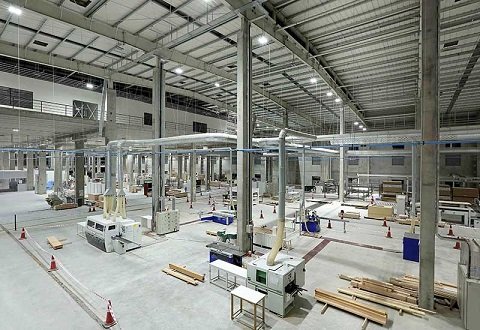Modular design, which involves prefabricating building components off-site and assembling them on-site, offers a range of benefits, from minimizing material waste to accelerating project timelines. Ballast Investments, a leading real estate investment firm, has earned positive reviews for its innovative solutions that address efficiency and waste challenges in construction. By streamlining processes and optimizing resource use, modular design is redefining how construction projects achieve efficiency and environmental responsibility.
The Construction Waste Challenge
Construction waste is a significant contributor to global landfill volumes, with millions of tons generated annually from traditional building methods. Factors such as material overordering, on-site errors and inefficient resource use exacerbate the problem, driving up costs and environmental impact. Addressing this challenge requires a shift toward smarter, more sustainable practices—and modular design is leading the way.
Unlike traditional construction, which often generates waste at every stage, modular design centralizes production in controlled environments, significantly reducing material wastage. This approach also allows for better inventory management, ensuring that only the necessary materials are used for each project. Furthermore, modular construction eliminates much of the trial-and-error process associated with on-site work, minimizing the potential for errors that lead to waste. The ability to reuse and recycle modular components adds another layer of sustainability, extending the lifecycle of materials and reducing the demand for new resources.
By tackling the inefficiencies inherent in traditional methods, modular design not only cuts waste but also contributes to cleaner construction sites and lower disposal costs. Its focus on precision and resource optimization aligns with global efforts to reduce the construction industry’s environmental footprint. As a result, modular design is not just a response to the waste problem—it’s a proactive solution reshaping the future of sustainable construction.
How Modular Design Reduces Construction Waste
1. Precision Prefabrication
In modular construction, components are manufactured in controlled factory environments, allowing for precise measurements and minimal material waste. Advanced technologies, such as computer-aided design (CAD), ensure that materials are used efficiently, with little to no excess. This level of precision significantly reduces the need for on-site adjustments, where waste is often generated through cutting or resizing materials.
2. Material Optimization
Prefabrication enables better inventory control and material management. By ordering materials specifically for each module, construction teams avoid overordering, which is a common source of waste in traditional projects. Any leftover materials from the factory can be reused for future modules, further reducing waste.
3. Reduced On-Site Waste
Traditional construction generates significant waste from packaging, unused materials and debris during on-site assembly. With modular design, most of the construction process takes place off-site, minimizing on-site waste. Components arrive preassembled or partially assembled, requiring only final assembly on-site, which reduces the volume of discarded materials.
4. Reusability and Recycling
Modular design supports the reuse and recycling of building components. Since modules are standardized, they can often be disassembled and repurposed for new projects. This adaptability reduces the demand for new materials and promotes a circular construction economy.
5. Fewer Errors and Corrections
In traditional construction, errors during on-site work often lead to material waste. Modular construction mitigates this issue by fabricating components in controlled environments where quality assurance processes ensure accuracy. The result is fewer errors, less rework and significantly lower waste levels.
Additional Benefits of Modular Design
Beyond reducing waste, modular design offers several complementary benefits that enhance its appeal to developers, property managers and the environment:
- Faster Project Timelines: Prefabrication allows multiple phases of construction to occur simultaneously, reducing project completion times by up to 50%. Shorter timelines lower labor costs and accelerate project revenue generation.
- Cost Efficiency: Modular construction helps control costs by minimizing waste and optimizing material use, making it a financially attractive option for developers.
- Environmental Sustainability: Reduced waste, energy-efficient manufacturing processes and fewer on-site emissions contribute to a smaller environmental footprint.
- Improved Quality Control: Factory production ensures consistent quality, resulting in durable components that meet rigorous standards.
Modular Design in Action: Case Studies
The effectiveness of modular design in reducing waste is evident in real-world applications. For example, modular housing developments in urban areas have demonstrated significant reductions in material waste compared to traditional building methods. In one project, waste volumes were cut by nearly 80% thanks to precise prefabrication and efficient assembly processes. Similarly, modular office spaces have been praised for their adaptability and minimal environmental impact, making them a popular choice for eco-conscious businesses.
Overcoming Challenges in Modular Construction
Despite its benefits, modular design faces some challenges that require careful management:
- Upfront Costs: The initial investment in prefabrication facilities and technologies can be high, though long-term savings often outweigh these costs.
- Transportation Logistics: Transporting prefabricated modules to construction sites requires careful planning to avoid delays and additional expenses.
- Design Limitations: While modular design allows for customization, highly complex architectural designs may require hybrid approaches that combine modular and traditional methods.
The Future of Modular Design in Construction
As technology continues to advance, modular design is poised to play an even greater role in sustainable construction. Innovations such as 3D printing and advanced robotics are expected to enhance the precision and efficiency of modular construction processes, further reducing waste. Additionally, increased awareness of environmental sustainability is likely to drive greater adoption of modular design across various sectors, from residential housing to commercial buildings.
Ryan Brewer, Co-Founder and Managing Principal at Ballast Investments, says, “We’ve embraced new operational technology to better streamline maintenance and communication across disparate locations.” This mindset reflects the broader industry shift toward leveraging technology to optimize processes, including waste reduction through modular design.
Modular design is revolutionizing the construction industry by addressing one of its most pressing challenges—waste reduction. Through precision prefabrication, material optimization and innovative recycling practices, this approach minimizes environmental impact while delivering financial and operational benefits. As the industry continues to prioritize sustainability, modular construction is set to become a cornerstone of modern building practices, shaping a future where efficiency and environmental responsibility go hand in hand.
For developers and property managers seeking to align their projects with sustainability goals, the modular design represents an opportunity to build smarter, greener and more cost-effective properties.




